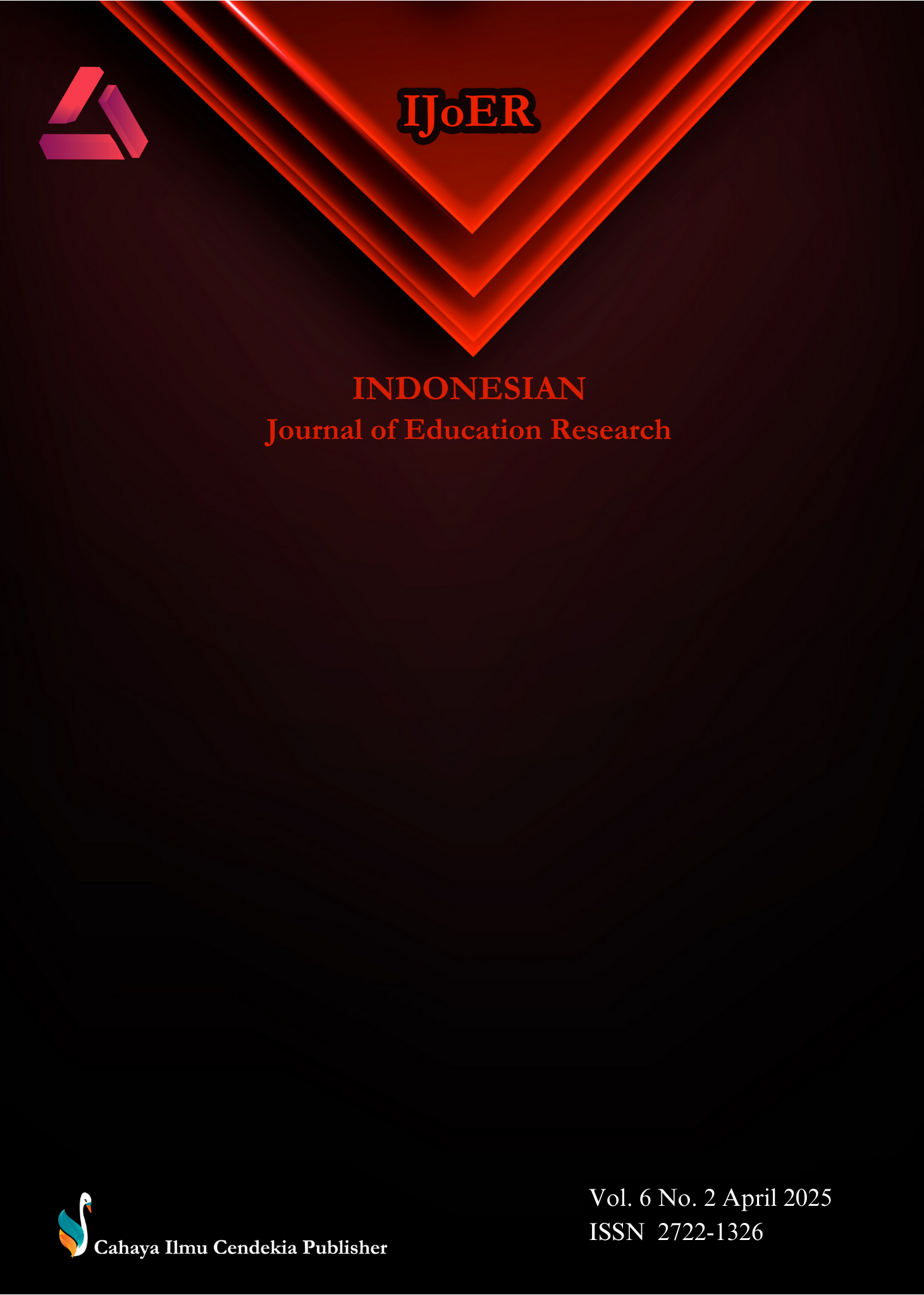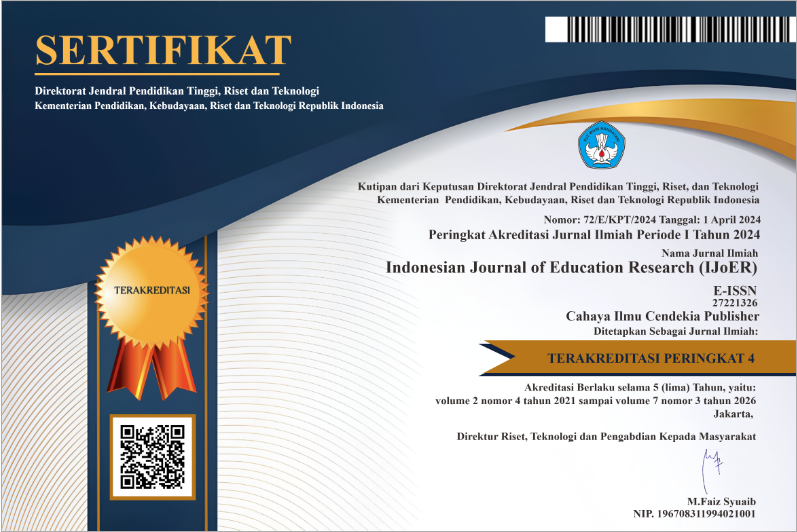Kankanta: Unlocking The Cultural and Educational Significance of Ilocano Folksongs
Abstract
Purpose of the study: The subjects of this study were the Ilocano folksongs. This study aimed to collect Ilocano songs, know the worldviews of each song, identify the themes, and determine the different values that are embedded in the songs.
Methodology: The researchers aimed to provide a diverse representation of Ilocano culture by collecting 10 Ilocano folksongs specifically songs about relationship. The data were collected online as they were accessible and easy to find. After gathering the necessary data, the researchers sought for English translations of each Ilocano folksong and determined the themes, values, and worldviews in the folksongs.
Main Findings: Results showed that Ilocano folksongs contain themes such as love songs, courtship songs, death songs, unrequited love, sorrow, relationship, longing, admiration, and decision-making. Also the results showed that most of the values that are embedded in the songs are about reassurance, loyalty, sincerity, compatibility, thoughtfulness, vulnerability, being considerate, and being meticulous.
Novelty/Originality of this study: This study would be a help to various stakeholders of the educational system as well as to the students taking up language and literature related courses for they would benefit and become well-informed of the analyzation of themes, values, and worldviews embedded in the Ilocano folksongs.
References
J. Elder and G. B. S. Principal, “The Limrik,” 2011.
A. O. de la Cruz, “Analyses and Conservation Strategies of Indigenous Ilokano Folksongs in Northwestern Cagayan, Philippines,” J. Hum. Res. Rehabil, vol. 9, no. 1, pp. 116–122, 2019.
I. S. Buenrostro and J. F. A. Cabbab, “Reliving the Filipino classical music heritage: Preservation and restoration of Philippine art music manuscripts of the University of the Philippines-Diliman College of Music,” 2013.
W. Matczynski, “Highlife and its Roots: Negotiating the social, cultural, and musical continuities between popular and traditional music in Ghana,” 2011.
S. Delmendo, The star-entangled banner: One hundred years of America in the Philippines. UP Press, 2005.
R. P. Santos, TUNUGAN: Four essays on Filipino music. UP Press, 2005.
J. Maceda, “Gongs & bamboo: a panorama of Philippine music instruments,” 2013.
J. W. Creswell and V. L. P. Clark, Designing and conducting mixed methods research. Sage publications, 2017.
G. A. Bowen, “Document analysis as a qualitative research method,” Qualitative research journal, vol. 9, no. 2, pp. 27–40, 2009.
W. Humboldt, “On language: On the diversity of human language construction and its influence on the mental development of the human species,” 1999.
I. Sakowicz Tebinka, “Victorian Courtship–from Ideal to Real. The Englishwoman’s Domestic Magazine and the Rules of Etiquette,” Studia Historica Gedanensia, no. 14, pp. 215–227, 2023.
A. Rokach and S. H. Chan, “Love and infidelity: Causes and consequences,” Int J Environ Res Public Health, vol. 20, no. 5, p. 3904, 2023.
M. B. Simanjuntak and M. S. Lumingkewas, “Representation of longing through the lyrics of the song" mother how are you today",” in Prosiding Seminar Nasional Inovasi Pendidikan, 2022.
H. Antonopoulou, “The value of emotional intelligence: Self-awareness, self-regulation, motivation, and empathy as key components,” Technium Education and Humanities, vol. 8, pp. 78–92, 2024.
E. Kislev, “Singlehood as an identity,” Eur Rev Soc Psychol, vol. 35, no. 2, pp. 258–292, 2024.
M. A. Jorgensen‐Wells, S. L. James, and E. K. Holmes, “Attachment development in adolescent romantic relationships: A conceptual model,” J Fam Theory Rev, vol. 13, no. 1, pp. 128–142, 2021.
W. L. Dunlop, N. Harake, and D. Wilkinson, “Romantic heartbreak: Prevalence, personality traits, and personal stories,” Pers Relatsh, vol. 28, no. 1, pp. 148–168, 2021.
G. Winch, How to fix a broken heart. Simon and Schuster, 2018.
C. da Silva, F. Pereira, and J. P. Amorim, “The integration of indigenous knowledge in school: a systematic review,” Compare: A Journal of Comparative and International Education, vol. 54, no. 7, pp. 1210–1228, 2024.
C. M. S. Suyat, M. A. V Salvador-Garcia, and J. M. N. Molina, “Arem wennu Raem (admiration or respect): A phenomenological understanding of Ilocano courtship,” 2023.
N. Kolodny, “Love as valuing a relationship,” Philos Rev, vol. 112, no. 2, pp. 135–189, 2003.
R. G. Bringle, T. Winnick, and R. J. Rydell, “The prevalence and nature of unrequited love,” Sage Open, vol. 3, no. 2, p. 2158244013492160, 2013.
P. Pihkala, “Ecological sorrow: types of grief and loss in ecological grief,” Sustainability, vol. 16, no. 2, p. 849, 2024.
P. M. A. Desmet, “Faces of product pleasure: 25 positive emotions in human-product interactions,” International Journal of design, vol. 6, no. 2, 2012.
R. Wageman, “The meaning of interdependence,” in Groups at work, Psychology Press, 2014, pp. 197–217.
M. Featherstone, “The tragedy of utopia in the age of the Anthropocene: Beyond dystopia, despair and catastrophic futures,” European Journal of Social Theory, vol. 27, no. 2, pp. 332–351, 2024.
D. Onu, T. Kessler, and J. R. Smith, “Admiration: A conceptual review,” Emotion Review, vol. 8, no. 3, pp. 218–230, 2016.
S. Devenport, C. Davis-McCabe, and S. Winter, “A critical review of the literature regarding the selection of long-term romantic partners,” Arch Sex Behav, vol. 52, no. 7, pp. 3025–3042, 2023.
P. Bruckner, The temptation of innocence: Living in the age of entitlement. Algora Publishing, 2000.
D. R. Javier, “App Review Using Tech Tools for Academic Writing:" Grammarly" as a Pedagogical Tool.,” Mextesol Journal, vol. 46, no. 2, p. n2, 2022.
F. F. Reichheld and P. Schefter, “E-loyalty: your secret weapon on the web,” Harv Bus Rev, vol. 78, no. 4, pp. 105–113, 2000.
J. Glück and S. Bluck, “The MORE life experience model: A theory of the development of personal wisdom,” in The scientific study of personal wisdom, Springer, 2013, pp. 75–97.
T. Tashiro, The science of happily ever after: What really matters in the quest for enduring love. Harlequin, 2014.
H. Weger and C.-Y. Tang, “Attachment avoidance and anxiety as predictors of confirming and disconfirming communication in romantic relationships,” South Commun J, vol. 87, no. 1, pp. 28–43, 2022.
W. K. Ramli, V. Rosmayanti, F. Winarno, and R. S. M. Syakirah, Word Formation: Derivational Morphemes. Penerbit KBM Indonesia, 2025.
L. Romanovska and M. Novak, “The role of teacher-student relationships in providing social and psychological support to participants of the educational process,” Social work and education, vol. 11, no. 2, pp. 308–319, 2024.
C. J. Hopwood et al., “Realness is a core feature of authenticity,” J Res Pers, vol. 92, p. 104086, 2021.
T. L. Huston, “What’s love got to do with it? Why some marriages succeed and others fail,” Pers Relatsh, vol. 16, no. 3, pp. 301–327, 2009.
P. W. Eastwick, E. J. Finkel, and A. H. Eagly, “When and why do ideal partner preferences affect the process of initiating and maintaining romantic relationships?,” J Pers Soc Psychol, vol. 101, no. 5, p. 1012, 2011.
M. L. Lopez, A handbook of Philippine folklore. UP Press, 2006.
B. Brown, Daring greatly: How the courage to be vulnerable transforms the way we live, love, parent, and lead. Penguin, 2015.
K. Y. Hun and U. H. A. Hassan, “A comparison of the concept of romantic love in the novel Ayat-Ayat Cinta 2 and Salju Sakinah,” Malay Literature, vol. 31, no. 1, pp. 98–123, 2018.
Copyright (c) 2025 Angeline A. Bacud, Genre L. Bolaron, Crestine Mae P. Sarse, Donnie M. Tulud, Orfelina M. Ajero

This work is licensed under a Creative Commons Attribution 4.0 International License.
Authors who publish with this journal agree to the following terms:
- Authors retain copyright and acknowledge that the Indonesian Journal of Education Research (IJoER) is the first publisher licensed under a Creative Commons Attribution 4.0 International License.
- Authors are able to enter into separate, additional contractual arrangements for the non-exclusive distribution of the journal's published version of the work (e.g., post it to an institutional repository or publish it in a book), with an acknowledgment of its initial publication in this journal.
- Authors are permitted and encouraged to post their work online (e.g., in institutional repositories or on their website) prior to and during the submission process, as it can lead to productive exchanges and earlier and greater citation of published work.







.png)
.png)




















